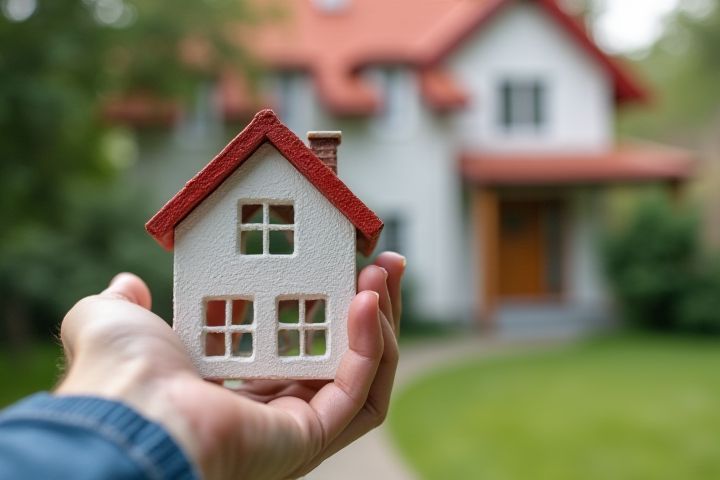
House prices are influenced by various economic factors, including supply and demand, interest rates, and local market conditions. In periods of economic growth, demand for housing often increases, leading to higher prices. However, market corrections can occur, causing prices to stabilize or even decline after rapid increases. Economic cycles, inflation, and demographic shifts also play significant roles in the long-term trend of housing prices. While some regions may experience prolonged price growth, it is unlikely that house prices can rise indefinitely without mitigating factors.
Can House Prices Rise Forever
Economic Cycles
House prices are influenced by economic cycles, which include periods of expansion and contraction. During boom phases, increased consumer confidence and job growth typically drive demand, pushing prices upward. Conversely, during recessions, factors like high unemployment and decreased disposable income can lead to declining home values. Understanding these cycles is crucial for potential buyers and investors, as they help predict market trends and identify optimal timing to enter or exit the housing market.
Supply and Demand
House prices are fundamentally influenced by the economic principles of supply and demand. When demand for housing outpaces supply, prices tend to escalate, driven by factors such as population growth, urbanization, and low-interest rates. Conversely, an oversupply of homes, often resulting from overconstruction or economic downturns, can lead to price stabilization or declines. Understanding local market conditions and demographic trends is essential for predicting future movements in house prices, ensuring you make informed investment decisions.
Interest Rates
House prices can be influenced significantly by interest rates, as they affect mortgage borrowing costs and overall affordability for buyers. When interest rates are low, borrowing becomes cheaper, often leading to increased demand for homes and driving prices upward. Conversely, higher interest rates can dampen buyer enthusiasm, resulting in slower price growth or even declines in housing values. Therefore, while it is possible for house prices to rise in the long term, fluctuations in interest rates can create cycles of appreciation and depreciation in the real estate market.
Inflation
House prices cannot rise indefinitely due to the influence of inflation and economic factors. As inflation increases, the purchasing power of currency decreases, affecting how much buyers are willing to pay for homes. Over time, rising interest rates may counteract housing demand, leading to a potential stabilization or decline in prices. It's essential for you to consider that while real estate can be a valuable investment, external economic conditions play a crucial role in determining its long-term trajectory.
Government Policies
Government policies significantly influence house prices through measures such as interest rates, tax incentives, and zoning regulations. When central banks maintain low-interest rates, borrowing becomes cheaper, encouraging more home purchases and driving up demand and prices. Moreover, policies that promote residential development and ease zoning restrictions can create more housing supply, potentially stabilizing or lowering prices. However, if governments fail to balance these factors, excessive demand without adequate supply can lead to unsustainable housing market inflation.
Population Growth
House prices are influenced significantly by population growth, as an increasing population leads to heightened demand for housing. When more people move to an area, it creates competition for available homes, driving up their prices. Urban centers, in particular, often experience rapid population increases, leading to a scarcity of housing options and escalating market prices. However, while rising house prices can create wealth for homeowners, they also raise concerns about affordability, particularly for first-time buyers entering a burgeoning market.
Urbanization Trends
Urbanization trends indicate that as more people migrate to cities, the demand for housing increases significantly. For instance, a report by the United Nations projects that by 2050, approximately 68% of the global population will reside in urban areas, leading to intensified competition for housing. This rising urban population often drives up house prices, creating an upward trajectory that can seem sustainable. However, potential economic factors, such as interest rates and job availability, might eventually influence the longevity of this price increase.
Foreign Investment
Foreign investment significantly influences house prices, particularly in urban areas where demand consistently outpaces supply. In the past decade, significant increases in foreign capital inflow have led to average property values rising by over 60% in cities like Vancouver and Sydney. These investments often come from buyers seeking safe assets, which can create inflated price trends that may not align with local income levels. As you consider entering the housing market, it's essential to understand how foreign investments can create both opportunities and challenges in valuing real estate.
Technological Advances
Technological advances play a pivotal role in shaping the housing market, influencing factors such as construction efficiency and energy sustainability. With innovations like modular building techniques and 3D printing, the time and cost associated with constructing homes can be significantly reduced, potentially increasing supply and affecting prices. Smart home technology enhances property appeal and functionality, thereby driving demand in an increasingly tech-savvy market. As you consider your investment, understanding how these technological trends impact real estate valuation can inform your decisions regarding future property purchases.
Environmental Factors
Environmental factors play a crucial role in the dynamics of house prices, influencing their sustainability over time. Climate change, for instance, can lead to increased flooding or wildfires, affecting property values in vulnerable areas. According to a 2022 report, about 30% of homes in high-risk zones experienced price depreciation, highlighting the market's sensitivity to environmental conditions. Sustainable practices, such as energy-efficient homes or green spaces, can enhance property appeal, potentially leading to a 10-15% increase in valuation, showcasing the intricate relationship between environmental factors and housing market trends.
